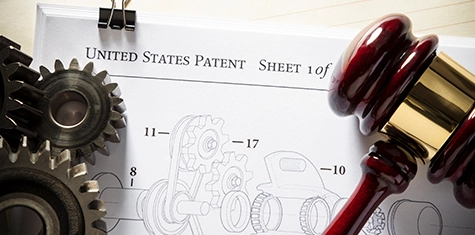Over a year after the Supreme Court’s decision in Halo Electronics, district courts continue to disagree over what is required to adequately plead a claim for willful infringement. The District of Minnesota is beginning to enter the fray.
As we’ve previously described, in Halo Electronics, Inc. v. Pulse Electronics, Inc., 136 S. Ct. 1923 (2016), the Supreme Court rejected the Federal Circuit’s standard for proving willfulness as too rigid. The Supreme Court reasoned that “no precise rule or formula” applied for awarding enhanced damages under 35 U.S.C. § 284. Id. at 1932. Instead, the decision to enhance damages for willful infringement is left to the discretion of the district courts and is based on the particular facts of each case. Id. at 1931-33.
Armed with Halo, patent holders seeking to allege willful infringement are facing uncertainty at the first step of the process: What must they plead to adequately state a claim for willfulness? The Federal Circuit has yet to weigh in on this question. As a result, district courts across the country have been left to determine the sufficiency of willfulness pleadings.
Two Approaches to Pleading Willfulness
Two primary approaches have emerged. On the one hand, a number of courts have determined that patent holders need only allege that the defendant had knowledge of the asserted patent and continued to infringe. See, e.g., Lexington Luminance LLC v. TCL Multimedia Tech. Holdings, Ltd., No. 16-cv-11458-DJC, 2017 WL 3795769, at *6 (D. Mass. Aug. 30, 2017) (holding that at the pleadings stage, “a plaintiff is not required to allege more than knowledge of the patent and of infringement”); Raytheon Co. v. Cray, Inc., No. 2:16-CV-00423-JRG-RSP, 2017 WL 1362700, at *5 (E.D. Tex. Mar. 13, 2017) (same).
In contrast, other courts focus on the Court’s statement in Halo that enhanced damages are meant to punish “egregious infringement behavior.” 136 S. Ct. at 1932. These courts require allegations of egregious conduct beyond knowledge. See, e.g., Cont’l Circuits LLC v. Intel Corp., No. CV16-2026, 2017 WL 2651709, at *8 (D. Ariz. June 19, 2017) (“[A]llegations of knowledge alone are insufficient.”); Finjan, Inc. v. Cisco Sys. Inc., No. 17-cv-00072-BLF, 2017 WL 2462423,at *5 (N.D. Cal. June 7, 2017) (holding that simple conclusory allegations of knowledge and infringement are not enough to plausible allege egregiousness).
The District of Minnesota Joins the Debate
In two recent decisions, judges in the District of Minnesota have signaled how they perceive the pleading requirements post-Halo. In both cases, the judges seemed to favor the first approach, finding the plaintiffs’ willful infringement claims adequate where those claims alleged only knowledge of the patent-in-suit and continued infringement.
In the first case, Magistrate Judge Franklin L. Noel considered Polaris Industries’ motion to amend its complaint to add a claim for willful infringement against Arctic Cat in a lawsuit involving side-by-side vehicles. Polaris Indus. Inc. v. Arctic Cat Inc., Civil No. 15-4475 (D. Minn. Mar. 2, 2017). Magistrate Judge Noel granted Polaris’s motion, concluding that Polaris’s proposed amendments adequately pled that Arctic Cat had knowledge of the patent and continued to infringe by selling the accused product. Specifically, Arctic Cat admitted the date when it learned of the existence of Polaris’s patent. Polaris also alleged that after that date, Arctic Cat continued to sell the accused products and has not made or considered making any changes to attempt to avoid infringement. Magistrate Judge Noel did not require allegations of “egregious conduct.” Chief Judge John R. Tunheim later affirmed this order in relevant part. Polaris Indus. Inc. v. Arctic Cat Inc., Civil No. 15-4475 (D. Minn. July 10, 2017).
In the second case, Judge Wilhelmina M. Wright denied a motion to dismiss a willfulness claim for failure to state a plausible claim for relief. Regents of the Univ. of Minn. v. LSI Corp. & Avago Techs. U.S. Inc., Case No. 16-cv-2891 (D. Minn. June 29, 2017) (denying the motion to dismiss without reference to the Halo opinion). The lawsuit involved allegations by the Regents of the University of Minnesota that the defendants infringe the University’s patent relating to a method for coding data to hard disk drives. In denying the defendants’ motion to dismiss the willfulness claim, Judge Wright relied on cases decided before Halo that state that a plaintiff’s complaint must “provide notice” of a willfulness allegation and that willfulness requires a showing that the infringer acted “despite an objectively high likelihood that its actions constituted infringement of a valid patent.” Because the complaint alleged that the defendants were aware of the patents-in-suit and knew that their conduct, or the conduct of their customers, was infringing, those allegations were “sufficient to give Defendants notice of the University’s allegation that their conduct was willful.”
Conclusion
Because of the small sample size of decisions on this issue, litigants should continue to watch how judges in the District of Minnesota approach the adequacy of willfulness pleadings. In the meantime, cautious patent holders may consider alleging some level of “egregiousness” to defend against the specter of defendants’ motions to dismiss.

